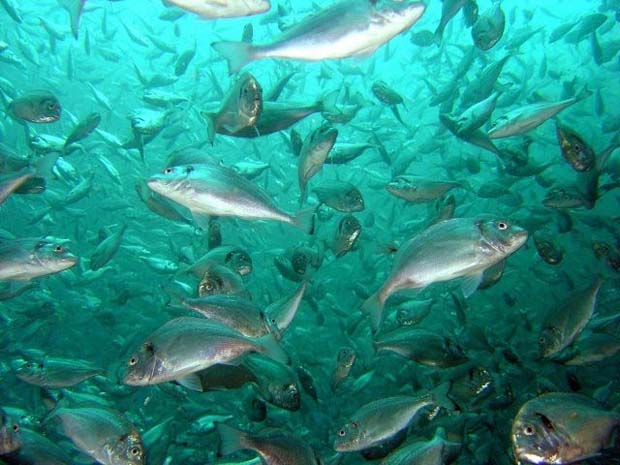Washington, D.C., May 9, 2013
 [dropcap]T[/dropcap]he Managing Our Nation’s Fisheries 3 conference wrapped up today on a successful note, with conference participants developing 128 recommendations for improving fishery sustainability. The draft recommendations are online – click here […], and will be further elaborated in the conference proceedings.
[dropcap]T[/dropcap]he Managing Our Nation’s Fisheries 3 conference wrapped up today on a successful note, with conference participants developing 128 recommendations for improving fishery sustainability. The draft recommendations are online – click here […], and will be further elaborated in the conference proceedings.
The conference was coordinated by the eight Regional Fishery Management Councils and NOAA Fisheries, and was sponsored by both fishing industry and environmental groups. The conference aimed to identify both legislative and non-legislative measures to advance fishery sustainability in light of the coming reauthorization of the Magnuson-Stevens Fisheries Conservation and Management Act, which governs Federal fishery management in the United States. Most participants seemed to agree that the Magnuson-Stevens Act has been successful in managing U.S. fisheries, and that large-scale revisions would not be needed. For example, under the Act, 32 fish stocks that were previously labeled “overfished” have been rebuilt. However, there was also agreement that some changes are needed to keep the Act relevant, flexible, and responsive.
“These recommendations will be considered carefully as we move forward with Magnuson-Stevens Act reauthorization,” said Dave Whaley, Legislative staff for the House Natural Resources Subcommittee. “We do need to act carefully; we do not want to solve problems in one area of the country while creating new problems in other areas.”
The conference, held at the Mayflower Renaissance Hotel in Washington, D.C., began on May 6 with keynotes by Rep. Doc Hastings (R-WA); NOAA Assistant Administrator Eric Schwaab; chef, author and television host Barton Seaver; and Deadliest Catch skipper Keith Colburn. The conference continued May 8 and 9 with sessions on improving fishery management essentials, advancing ecosystem-based decision making, and providing for fishing community stability. Senator Mark Begich (D-AK) addressed the conference attendees on May 8. More than 600 people attended the conference.
The conference was marked by collaboration, with attendees from Federal, state, and tribal agencies; commercial, recreational, and subsistence fisheries; environmental organizations; fishing community representatives; and the interested public.
During the conference, speakers and panelists interacted with audience participants to develop “findings” to further fishery sustainability. One hundred and twenty-eight findings covering nine focus topics were presented on the last day of the conference. Some of the themes that emerged included the need for better communication and collaboration among groups involved in fisheries; the need for flexibility in regulations, in part to allow managers to react to change more quickly; the need for more and better science, including collaborative research involving fishermen and scientists; and stronger measures to ensure more responsible international fishery management. Other themes included the need to consider ecosystem management, the need for stronger tools to address habitat impacts, the challenges of adapting to climate change, and the benefits of a federal sustainable seafood label.
For more information on the conference, including position papers, click here […]


